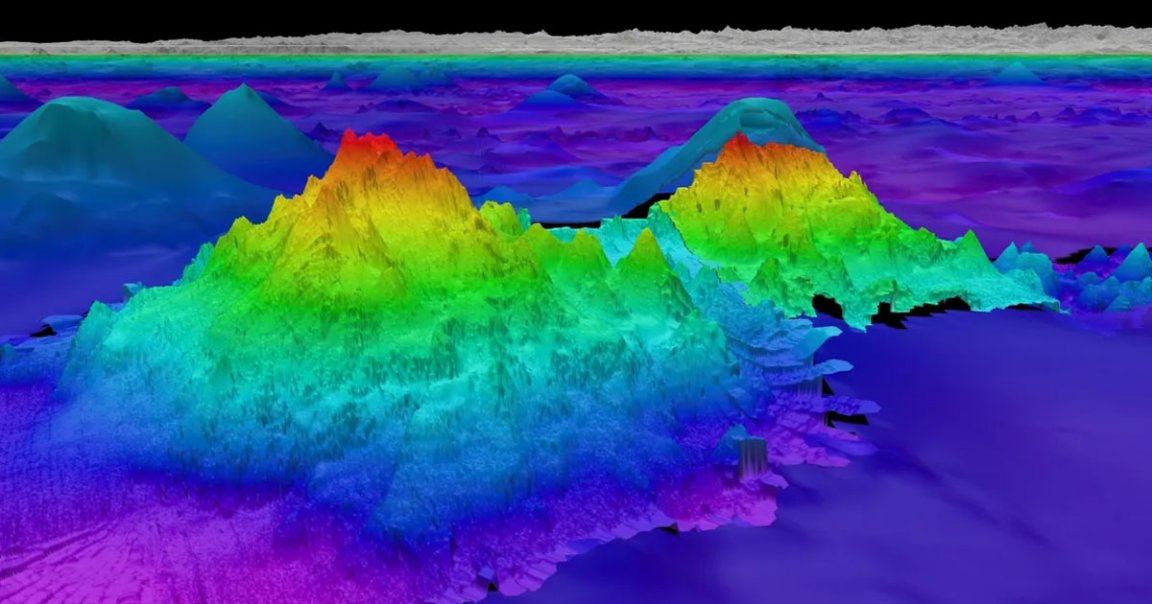
Underwater Mountain
A team of scientists on board an exploration vessel off the coast of South America have made a startling discovery: four previously unknown massive underwater mountains, ranging from 5,200 to 8,800 feet tall. The discovery highlights just how little we know about the oceans covering much of our planet. According to recent estimates, more than 80 percent of the ocean has never been mapped, let alone explored.
“The tallest is over one-and-a-half miles in height, and we didn’t really know it was there,” Schmidt Ocean Institute’s Jyotika Virmani — whose team has been studying “seamounts” from on board the vessel Falkor — told New Scientist.
Gravity Anomalies
Using sonar equipment, Virmani and team investigated gravity anomalies while sailing down from Costa Rica to Chile. These anomalies are usually the result of a hard-to-discern mass — in this case, entire mountains sticking out of the ocean floor.
“I was thinking one, maybe two, but to find four is incredible,” Virmani told New Scientist. “It does show how much we don’t know of what’s out there.”
Thanks to their sloped sides, seamounts are usually teeming with life. Last year, an international team of scientists, including Virmani, discovered a deep-sea octopus nursery near a low-temperature hydrothermal vent by a previously unknown seamount off the coast of Costa Rica.
Virmani and his team have discovered 29 seamounts so far, a tiny fraction of the mountains we have yet to discover.
According to the National Oceanic and Atmospheric Administration’s Ocean Exploration organization, there are likely more than 100,000 of them that are at least 3,300 feet high.
A different study last year examined global satellite observations, concluding that there were nearly 20,000 seamounts still to be found despite more than 24,600 that have already been mapped.
“The fact that we don’t have maps of our seafloor is crazy,” University of Plymouth marine biologist Kerry Howell, who was not involved in the research, told New Scientist.
Especially thanks to their incredible biodiversity, it’s more important than ever to study these hiding giants. Fortunately, scientists have been using high-tech mapping techniques to get a better view — research that could greatly support ongoing conservation efforts.
More from the bottom of the ocean: Scientists Recovered That Golden “Orb” From the Bottom of the Ocean and It Looks Different Now